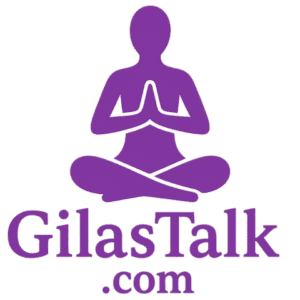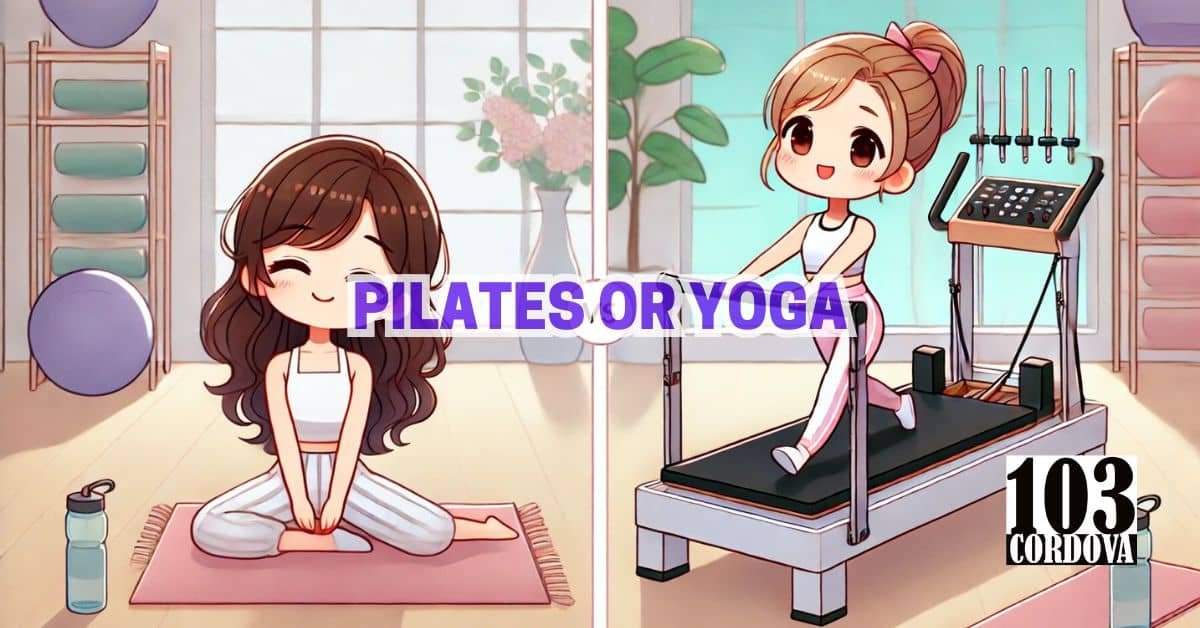Pilates and yoga are two distinct forms of exercise with unique approaches to enhancing physical and mental well-being.
While both focus on mindful movement, they each have different techniques and goals that set them apart.
Pilates often emphasizes strengthening core muscles through controlled movements, while yoga integrates breath and movement to improve flexibility and mental clarity.
These differences can affect how each practice impacts the body and the mind, making them appealing to people with different goals.
Understanding their unique characteristics helps in choosing the practice that aligns best with your individual needs.
1. Origins and Philosophy: The Roots of Pilates and Yoga
Yoga originated over 5,000 years ago in ancient India and was deeply influenced by spiritual teachings aimed at achieving harmony between body, mind, and spirit.
It is rooted in philosophies that encourage meditation, breath control, and ethical living to reach a balanced life.
In contrast, Pilates was created in the early 20th century by Joseph Pilates as a physical exercise system focusing on alignment, core strength, and controlled movements.
Pilates aims to create a strong, stable body through specific exercises, often without the spiritual focus found in yoga.
Both systems offer holistic benefits but are driven by distinct purposes and foundational beliefs.
🧘 How to Choose the Right Yoga Classes Online for Beginners: Tips for Success
2. Physical Focus: Core Strength vs. Flexibility and Balance
Pilates is renowned for its focus on building a strong core, often referred to as the “powerhouse,” which includes the abdominal, lower back, and hip muscles.
This focus on core strength supports better posture and stability in everyday movements.
Yoga, on the other hand, places a strong emphasis on flexibility, balance, and overall muscle tone, which can improve the body’s range of motion and adaptability.
While both can lead to greater strength and mobility, Pilates targets muscle control and endurance, and yoga encourages fluidity and range of movement.
The physical goals of each practice shape how they benefit the body differently.
🧘 Yoga Exercises for Seniors: Creating a Home Practice for Wellness and Relaxation
3. Types of Movements: Controlled Precision in Pilates vs. Flowing Sequences in Yoga
Pilates involves controlled, repetitive movements designed to target specific muscle groups with precision and focus on alignment.
Each Pilates movement is deliberate and is performed with a high level of focus on small muscle engagement, aiming for stability and efficiency.
In yoga, the movements often flow from one pose to another in a seamless sequence, creating a fluid, dance-like rhythm.
Some yoga styles, like Vinyasa, emphasize this continuous flow, while others, like Hatha, hold poses for extended periods.
These contrasting movement styles lead to a different feel in each practice, with Pilates often feeling more structured and yoga more meditative.
🧘 Safety Tips for Practicing Yoga for Seniors Over 60
4. Breathing Techniques: The Role of Breath in Each Practice
Breathing is integral to both Pilates and yoga, though each uses it differently to enhance the practice.
Pilates incorporates “lateral breathing,” directing breath toward the sides of the ribcage to maintain a stable core while performing exercises.
This technique allows practitioners to engage the deep abdominal muscles without disrupting posture or movement precision.
In yoga, breath control, known as “pranayama,” varies across styles, with each technique serving a purpose, from calming the mind to increasing physical endurance.
The different breathing approaches in each practice reflect their individual goals—stability and control in Pilates and mindfulness and energy flow in yoga.
🧘 Exploring the Benefits of Chair Yoga for Seniors: A Gentle Path to Wellness
5. Equipment vs. Mat: How Pilates and Yoga Utilize Different Tools
Pilates often includes specialized equipment such as the Reformer, Cadillac, and Wunda Chair, which use springs to add resistance and enhance body alignment.
This equipment helps practitioners target specific muscles, providing adjustable resistance and support as they progress.
Yoga, by contrast, typically relies on a mat with optional props like blocks, straps, and bolsters to aid in balance or provide modifications for challenging poses.
The simplicity of yoga props allows for flexibility and accessibility, while Pilates equipment can offer more structure and support for precise exercises.
These tools highlight the different physical demands of each practice, with Pilates leaning toward resistance and yoga focusing on adaptability.
🧘 How Yoga for Seniors Over 70 Can Improve Balance and Stability
6. Class Structure: Understanding the Format of Pilates and Yoga Sessions
Pilates classes usually follow a structured format with exercises targeting different areas of the body in a specific sequence, often moving from mat work to equipment-based exercises.
The sessions are designed to strengthen and stabilize the core, emphasizing repetition and control in each movement.
Yoga classes, however, vary widely depending on the style—Vinyasa classes focus on flowing sequences, while Hatha may include slower, meditative poses held for longer periods.
The flexible nature of yoga allows instructors to incorporate breathwork, meditation, and even chanting, while Pilates remains more fitness-oriented.
These differences in class structure create a distinct experience, with Pilates classes feeling more regimented and yoga classes allowing for more diversity and personalization.
🧘 How to Do Laughter Yoga to Cultivate Joy and Positivity
7. Health Benefits: What Each Practice Offers for Your Well-being
Pilates is beneficial for improving posture, core strength, and muscle tone, making it ideal for those looking to enhance body stability and alignment.
By focusing on targeted movements and core engagement, Pilates supports better spinal health and can reduce back pain over time.
Yoga offers a broader range of physical and mental benefits, including increased flexibility, improved balance, and reduced stress through mindfulness practices.
Practicing yoga can also lead to better sleep and enhanced mental clarity due to its emphasis on relaxation and breath control.
Both Pilates and yoga promote physical health, but yoga’s holistic approach often extends further into mental and emotional well-being.
🧘 Is Yoga Anaerobic Exercise? Understanding the Science Behind Yoga Practices
8. Target Audience: Who Benefits Most from Pilates or Yoga?
Pilates tends to attract people looking for a structured workout that emphasizes core strength, posture, and muscle toning.
It’s particularly beneficial for those wanting to improve stability, especially individuals recovering from injuries or those looking to enhance athletic performance through controlled movements.
Yoga appeals to a broad range of people, especially those interested in a holistic approach to health, combining flexibility, stress relief, and mental clarity.
Many people choose yoga for its mind-body connection, making it suitable for managing stress and promoting relaxation.
Both practices can be adapted to different fitness levels, but each serves specific physical and mental goals that attract distinct groups.
🧘 Fun and Creative Yoga Games for Kids: Enhancing Mindfulness and Movement
9. Injury Rehabilitation: Supporting Recovery Through Movement
Pilates is highly regarded for its rehabilitative qualities due to its focus on low-impact, precise movements that can be modified to accommodate various injuries.
By emphasizing alignment and controlled engagement of smaller muscle groups, Pilates helps rebuild strength safely and is often used as part of physical therapy.
Yoga also supports recovery, especially when focusing on gentle stretching and balance to restore mobility.
However, some yoga poses may need modification for those with injuries, as certain postures could strain affected areas.
Both practices can aid in rehabilitation, but Pilates’s targeted approach often makes it a more controlled choice for injury recovery.
🧘 A Look Inside the Yoga World
10. Community and Culture: The Social Aspects of Pilates and Yoga
Yoga often fosters a sense of community through group classes that encourage collective mindfulness, relaxation, and a shared journey toward personal growth.
Many yoga practitioners find a supportive culture that promotes not only physical health but also ethical values like kindness and compassion.
Pilates classes, especially in small-group settings, also create strong social connections as participants work toward similar physical goals in a focused environment.
While Pilates may be more fitness-centered, both practices offer a space for social interaction and mutual support.
The community aspect in both can be enriching, but yoga communities often emphasize connection on both a mental and physical level.
🧘 103 Cordova Yoga Studio Marikina
💡 Conclusion
Choosing between Pilates and yoga depends largely on your personal wellness and fitness goals, as each practice offers unique advantages.
Pilates is ideal for building core strength, improving posture, and providing a structured workout that can support injury recovery.
Yoga offers a blend of flexibility, stress relief, and mindfulness, making it suitable for those looking for a comprehensive approach to both physical and mental well-being.
Experimenting with both practices can help you discover which one aligns best with your lifestyle and individual health goals.
Ultimately, both Pilates and yoga can lead to a stronger, healthier, and more balanced life in distinct but complementary ways.
🧘 Our Services
Join our inclusive yoga classes at 103 Cordova Tower, Marquinton Residences, in Marikina City, where people of all ages are welcome to explore the benefits of yoga in a supportive and friendly environment.
Our classes are designed to improve flexibility, balance, and mental well-being, making yoga accessible to beginners and experienced practitioners alike.
Conveniently located on Cirma Street, we offer a calm space for you to focus on your health and relaxation.
For inquiries, reach out to us at 09176225780, connect via Facebook, or use our website’s contact form.
Experience a practice that nurtures both body and mind—right in the heart of Marikina City!

